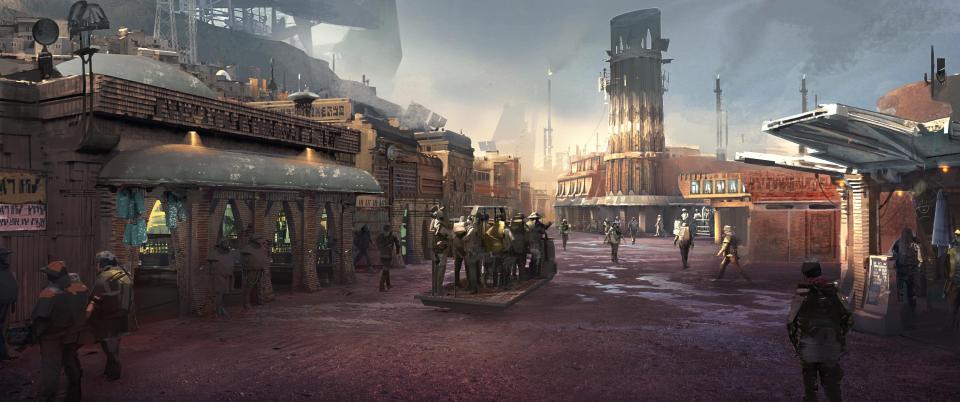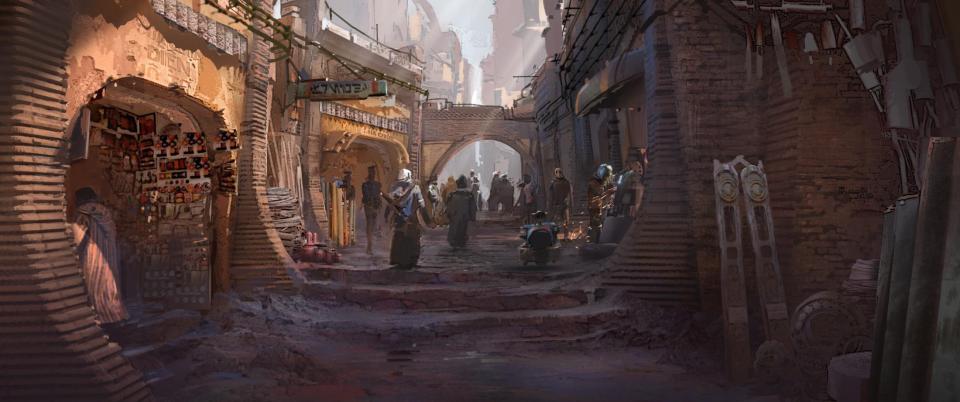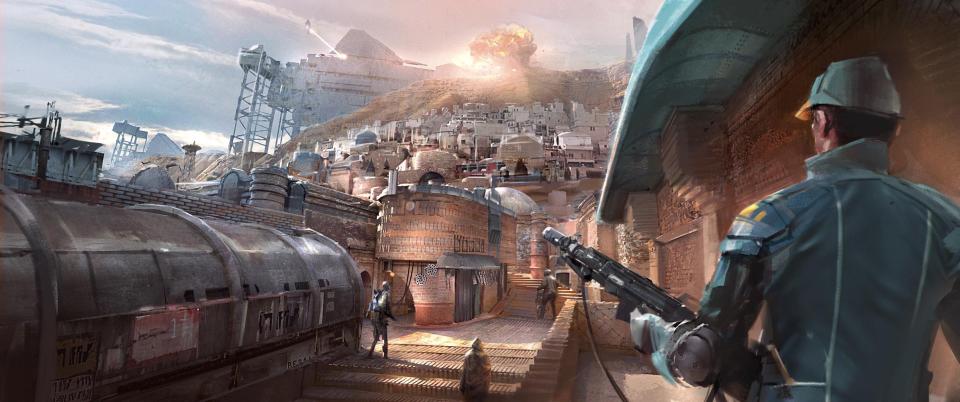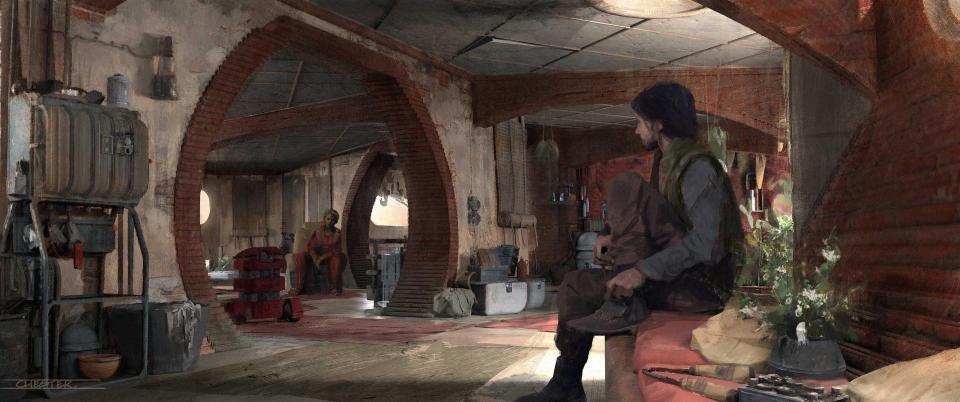Building the Worlds of ‘Andor’: How Ferrix Was Built Brick-by-Brick on a Backlot

Production designer Luke Hull crafted a working city for “Andor,” the “Star Wars” series streaming Wednesdays on Disney+.
The show, a prequel to the 2016 film “Rogue One: A Star Wars Story,” follows eventual rebel hero Cassian Andor (Diego Luna) and introduces audiences to new locations and planets. The most ambitious of these is Ferrix, a salvaging outpost on the edge of the galaxy that keeps itself free from the Empire’s interference.
More from Variety
The planet Cassian calls home is an arid one, which presented Hull and showrunner Tony Gilroy with the challenge of designing an environment that felt different from Tatooine or Jakku, places “Star Wars” fans know well. Hull, who won an Emmy for his work on the limited series “Chernobyl,” says, “We didn’t want it to fall into the trap of being a town in a desert, or I was quite keen for it not to be a frontier town. Tony was keen that it had a very strong cultural heart. Like you really understood that the people came together, looked after each other there, they weren’t just part of the environment.”

Eventually, they decided Ferrix should be built as a backlot set rather than a series of sound stages. “We knew we needed a big main street, and then everything grew off of that,” Hull says. He estimates that 80-85% of the scenes in Ferrix were shot on the backlot, a functional space where doors and windows open into useable buildings.
Once they decided to construct a town, the next step was to find an overall look that stayed true to “Star Wars” without feeling too dystopian. Hull says, “The thing that’s interesting about ‘Star Wars’ is each planet has a coherent aesthetic. It’s not like Earth in the sense where you can go to lots of different places, and all have very different flavors.” Because the economy of Ferrix is based in salvaging ship parts and metal, Hull envisioned a sturdiness to the place. “They felt really stoic and strong and reminded me of longshoremen in Belfast, building ships.” The team saw the town as starting with a small outpost and gradually growing and expanding out of the hillside as the population grew.

For Hull, everything started to come together once they settled on the right materials. “I think the big turning point was when we went, ‘let’s build a town out of bricks,’” he says. It was an unorthodox choice, one that hasn’t been done in the “Star Wars” universe before, but one that created a layer of history for the place. “I didn’t want to change the color of the brick because I thought the clay and the earthiness really played into who Ferrixians were,” Hull explains. “And then this idea that we kind of retrofitted on which was, when you die your ashes get baked into a brick and you get put into the town. It has this really nice, poetic completion to it.”
“Star Wars” wouldn’t be what it is without some computer graphics and VFX, which Hull and his team accounted for in their planning, though he’s proud to say that for “Andor,” so much of what you see is practical. “It’s a very real show, in terms of it’s a very set-heavy show, which I think is personally interesting,” he says. “Or it is location-based.” Several episodes and even parts of Ferrix were shot on locations nearby. He continues, “I mean, there’s an awful lot of VFX, don’t get me wrong on that. But a lot of it was thankfully discussed upfront and built into the design as well. You know what you’re working toward. We understood the geography of the wider planet, and how our built sets fitted within it.”

It wouldn’t be a “Star Wars” series without some Easter eggs, though Hull was determined to keep things subtle. A frozen carbonite machine in a corner or a cuddly toy bantha on a shelf are among some of the fun surprises that creep in occasionally. Hull notes, “It’s about finding a way to do it that fits in the show.”

Best of Variety
Constance Wu Gets Candid in Revealing New Memoir 'Making a Scene'
The Best Pop Culture Halloween Costumes for 2022: From 'House of the Dragon' to 'Euphoria'
Sign up for Variety’s Newsletter. For the latest news, follow us on Facebook, Twitter, and Instagram.

 Yahoo Movies
Yahoo Movies 